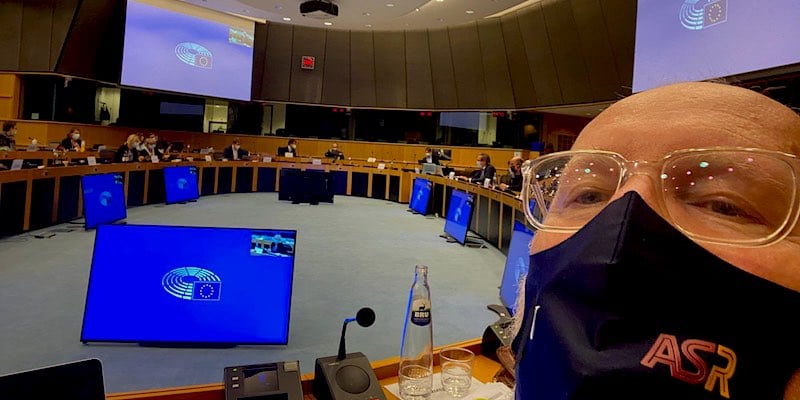
Frans Timmermans, the European Commission’s Green Deal lead, has been one of the most prominent voices behind the EU’s efforts to raise its 2030 carbon emissions reduction target from 40 to 55%. So, it came as no surprise when, following a provisional agreement with national governments, he hailed the news as “a landmark moment for the EU and a strong signal to the world.” “Our commitment to climate neutrality will guide our policies the next 30 years,” he said.
Campaigners were quick to rebuke Timmermans’ celebratory tone. Describing the agreement as a “farce”, the European Environmental Bureau’s climate expert Barbara Mariani said that a net -55% emissions target is way below what science requires, and not enough to limit temperature rise to 1.5°C as agreed under the Paris Agreement.
“Scientific evidence clearly shows that a 65% target for 2030 is needed to avoid the worst consequences of climate breakdown and guarantee a safe future for millions of young Europeans,” Mariani argued.
The EEB also argued against the European Council’s rejection of a proposal to extend the EU’s climate neutrality target to all member states, something that “risks triggering lack of accountability at national level and creating a two-speed Europe in which some countries will inevitably lag behind.”
A net 55% emissions reduction target was originally proposed by the European Commission last year. However, in October, the Parliament voted to increase the target to a more ambitious 60% despite fierce opposition by some member states.
The European Parliament also pushed for a gross rather than a net target, which would have been based exclusively on efforts to reduce carbon emissions across different sectors of the economy. Instead, this week’s deal partly relies on carbon sinks such as forests and nature’s ability sop up carbon and remove it from the atmosphere.
Even lower
“Planting trees is not as effective and reliable as reducing emissions at source, which is what we really need to speed up the transition towards climate neutrality,” Mariani said. According to experts, this means that the gross target would be 52.8%, which is even lower than expected.
Another contentious issue in the deal is the proposed development of voluntary roadmaps for industry sectors. “Climate neutrality roadmaps for economic sectors will be bottom up and indicative and will not therefore guarantee a level playing field and negative trade-offs among sectors,” Mariani concluded.
The provisional agreement is subject to approval by the Council and Parliament, after which it will through the formal steps of the adoption procedure.
To achieve its target, the European Commission is expected to table a ‘Fit for 55 package’ before the end of the year. This package of laws will require more ambition and coherence across all relevant pieces of legislation including air pollution, agriculture and forestry, biodiversity, and the circular economy, according to the EEB.
Blijf op de hoogte met de nieuwsbrief. Meld je hier aan.
( Je kunt ons ook steunen door lid te worden of te doneren )








